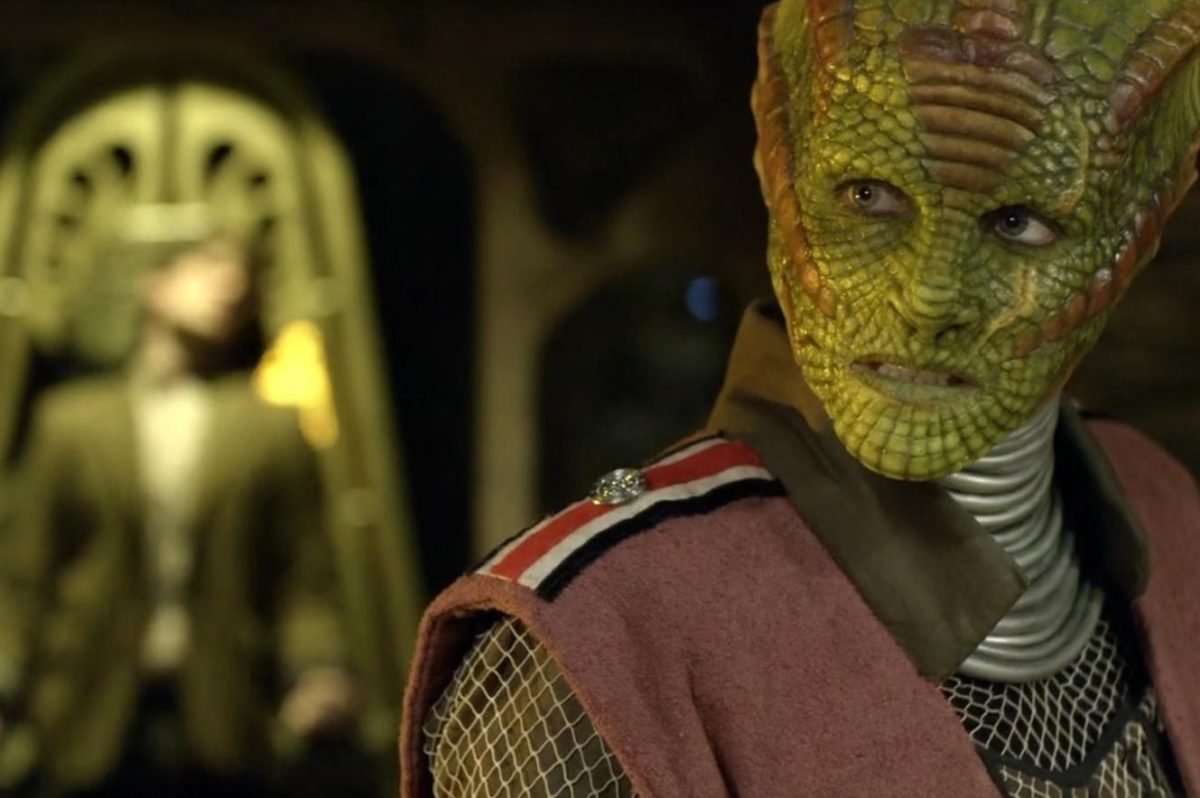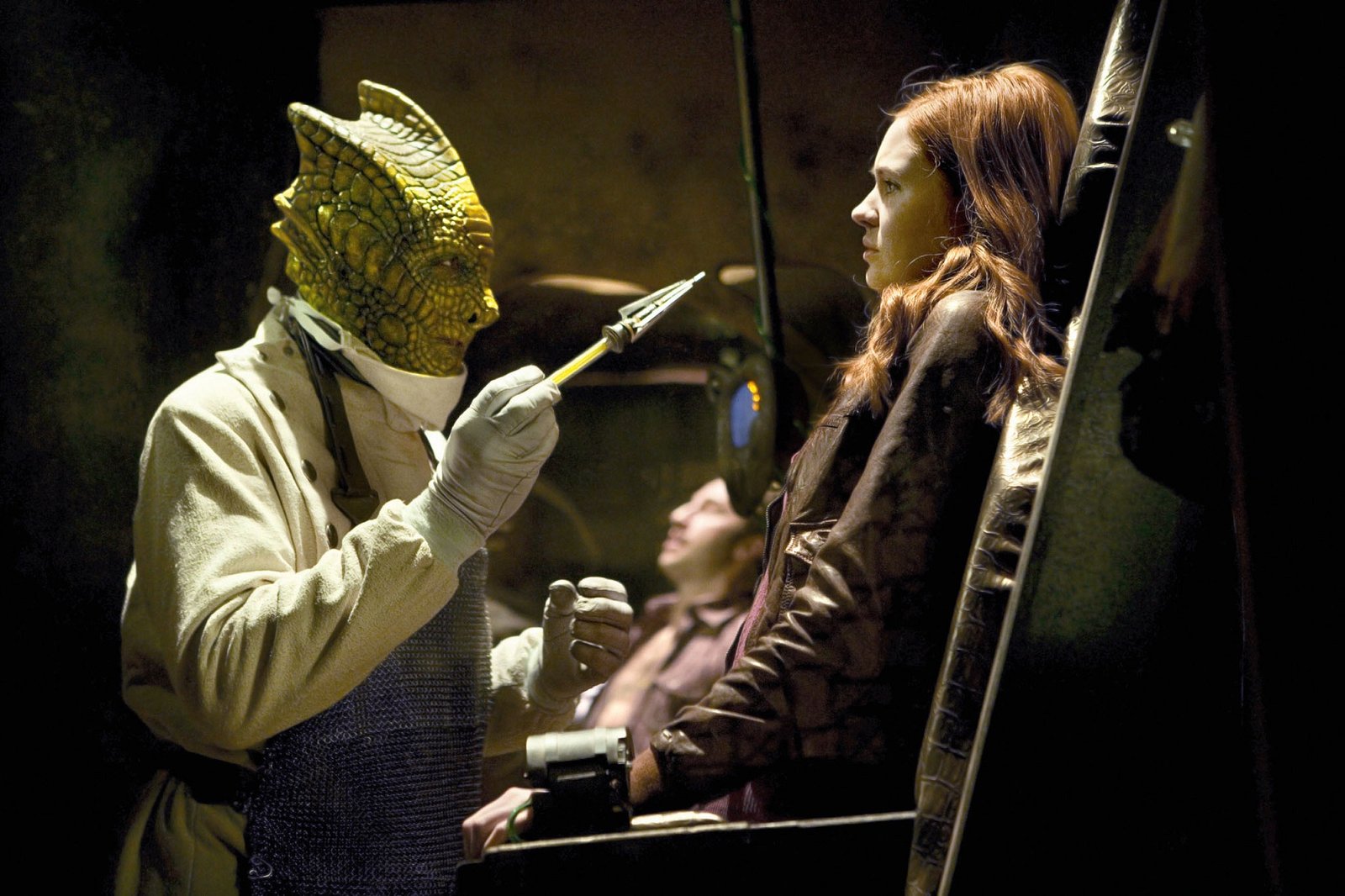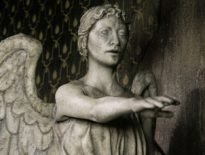The Hungry Earth/ Cold Blood is a curious beast, in that it introduces ideas to a new generation but actually recycles many – certainly the main ethical core of the piece – from Classic Doctor Who. Of course, it’s not great shock that it does this: the two-part storyline brought the Silurian race into the 21st Century in much the same way as Rise of the Cybermen/ The Age of Steel did for the Cybermen and The Sontaran Stratagem/ The Poison Sky did for the war-like potatoes. As a reintroduction, it needed to show new audiences what the Silurians are all about; namely, the previous inhabitants of the planet, who regard mankind as apes and who want to reclaim their ownership of Earth.
What essentially plays out is a runaround reminiscent of the Third Doctor era, going over the moral ground covered in Doctor Who and the Silurians and The Sea Devils (minus the plague and the Master-controlled prison, et al.), although less so Warriors of the Deep. The stories end in much the same way: with the Silurian relegated underground again, and the human race largely forgetting their existence. Except Elliot, the young boy instructed by the Doctor to pass on, as legend or religion, that the planet is to eventually be shared.
And that’s important: yes, The Hungry Earth/ Cold Blood revisits concepts from those aforementioned Malcolm Hulke-penned scripts, but it does add to the mythos by telling the audience that this isn’t over. Sadly, it’s never been picked up in subsequent serials, although Dinosaurs on a Spaceship at least does something different with the Silurian race. The Hungry Earth/ Cold Blood also tweaks the narrative of the Silurians by asserting that they should be called “Eocenes”, or, for arguments’ sake, Homo Reptilia.
These do at least demonstrate that the Series 5 story attempts to present us with new ideas, but they’re lost in the midden. So which ideas never made it to the final scripts? What did writer, Chris Chibnall, originally intend to do in this story?

Perhaps most significantly, Chibnall wanted to recontextualise the previous Silurian stories – essentially a retcon that would make The Timeless Children critics lament for simpler times. A new design for the race was needed, resulting in a major change to prosthetics. Actors, Neve McIntosh, Richard Hope, and Stephen Moore had make-up and prosthetics applied directly to their bodies. “We talked about that right from early on so you could really see the actors underneath the prosthetics and the actors would have the ability to give really strong and different performances,” Chibnall recalled. The process was far too intensive for the armies needed to populate the tale, so a more widely-produced mask was made to fit. “You can only afford so many prosthetics, and normally on Doctor Who you’ve got those slightly cloned monsters like the Ood who are very uniform, and you can get a lot of numbers because they’re just masks you pull over your face,” Chibnall explained. “The thing about Silurians is that what makes them brilliant is also what makes them incredibly expensive, which is the prosthetic procedure which is individually designed to each actor and individually applied. The face mask was a solution to that, and when the design came out from Millennium FX we all fell in love with it.”
However, Chris Chibnall originally intended for all the previous Silurians to have had human-like faces too; that what viewers had seen before were elaborate masks as well.
Showrunner, Steven Moffat overruled this and decided, instead, to push that these Silurians were another sub-species. This does, at least, fit in with the established mythos, which had featured slightly different designs. It also makes more sense that these Silurians don’t have a third-eye (passed off by Moffat as being too reminiscent of Davros, who had appeared in the Series 4 finale, The Stolen Earth/ Journey’s End), but instead boast a long tongue capable of poisoning enemies. We only see this used a couple of times in the serial – primarily to infect Tony Mack (Robert Pugh), an idea which sadly didn’t go anywhere by the story’s end – although Madame Vastra later uses it in A Good Man Goes To War.
Also up for consideration was bringing back the Sea Devils, but this thought distracted from the core focus of the narrative, i.e. the return of the Silurian race to Doctor Who, last seen in 1984. “I did say, ‘Should we put them in, should they be kind of swimming in those pools of lava under the Earth?’ but we decided to just do the Silurians,” said Chibnall. “You have to be quite rigorous with yourself as a fan of the show, because it’s like having a sweet tooth – you just want to bring all of these things back and you have to think, ‘hang on, what does the story need?'”
Still, in the intervening years, much was added to the races’ lore in other mediums. When, in February 2010, it was announced that the Silurians would be back, some questioned whether we’d see any dinosaurs. These questions were still raised between the transmissions of The Hungry Earth and Cold Blood, despite Chibnall quashing the idea.

But at the scripting stage, there was a breed of dinosaurs featured: Armasaurs, seemingly lifted from Magic: The Gathering roleplay game. These armadillo-like race would have obeyed the Silurians, travelling to the surface to kidnap humans and bringing them underground. Presumably, these would have emerged from the holes referenced in The Hungry Earth title. We’d eventually get a sort-of-Silurian-story that linked them to dinosaurs, in 2012’s Dinosaurs on a Spaceship, confirming on TV that they lived during the same period. Those Silurians fled to the stars and brought their reptilian buddies with them (though seemingly no Sea Devil cousins). The Doctor would settle the dinosaurs on another planet, dubbed “Siluria”.
The Armasaurs – think of them akin to Stegosaurus and Ankylosaurus – were replaced by bioprogrammed earth (which acts much like quicksand), due to budgetary constraints.
And they sound pretty vicious; hardly a system chief scientist Malohkeh would likely have employed to bring humans to the city.
Mind you, Malohkeh clearly didn’t have many qualms about human bodies in an earlier draft, which saw Amy and Mo stripped to their underwear while undergoing experimentation! Viewers (or more specifically, tabloid newspapers) got in a tizzy over Amy wearing a short skirt while dressed like a police officer in The Eleventh Hour, so we can only imagine the headlines if we’d have seen Karen Gillan in her unmentionables. (Was there such a fuss over Peri and Turlough in Planet of Fire, when it first aired?)
Nonetheless, most of these ideas were probably best left off screen. What we end up with, instead, is a retread of Doctor Who and the Silurians (it’s no shock Chibnall rewatched the 1970 serial and read its Target novelisation, Doctor Who and the Cave-Monsters, before scripting the Matt Smith two-parter), which reintroduces a species many consider iconic but whose appearances in the show are surprisingly few and far between. The Hungry Earth/ Cold Blood‘s greatest legacy is really Madame Vastra, a character introduced just over a year later, played by McIntosh who’d brought Alaya and Restac to life.
Yet the Series 5 story has such potential for a sequel…



